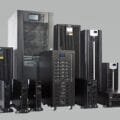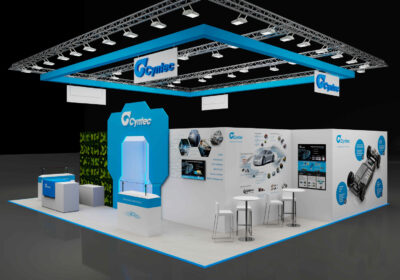~ Effective wireless telemetry system selection for geographically dispersed water networks ~
Effectively monitoring and controlling water distribution networks is crucial if we are to avoid wasting this valuable, life-preserving resource. Wireless telemetry systems play a vital role in this task, collecting data from remote locations and transmitting it to a central control station for real-time monitoring and control. However, with a wealth of options to choose from, it isn’t always clear what is the best wireless system for the job. Here Ian Loudon, international sales manager at wireless telemetry specialist Omniflex, explains how to select wireless equipment in the water industry and shares some advice for system setup.
South Africa, with its vast rugged landscapes and geographically dispersed water reservoirs and control stations, presents unique challenges for implementing wireless telemetry systems for water network management. Traditional wired communication methods are generally impractical for use in water networks because of the prohibitively high cost of cable installation over long distances.
Wireless telemetry offers a cost-effective and flexible solution to this problem, but factors like power supply, backups, radio frequency selection and signal transmission across rugged terrain require careful consideration. Overcoming these challenges requires a strategic, holistic approach.
Managing the landscape
Solar panels are often the best primary power source for wireless modules due to the remote locations of many reservoirs. However, battery backups and redundant systems are always recommended to ensure uninterrupted operation during power outages or communication failures.
Radio frequencies that balance transmission range with penetration through obstacles, like trees and hills, are crucial. Careful antenna selection and network design, along with repeaters if necessary, can overcome signal degradation caused by South Africa’s craggy terrain. Due to the distances involved, maintaining a clear line of sight between network nodes is a critical factor in order to reliably ensure signal strength.
South Africa falls into the same EMEA zone as the UK and largely follows the same radio standards. Here, 868 Mhz is the optimal license-free radio band that ensures business don’t incur unnecessary transmission band subscription costs. The band used is free from other radio traffic that can interfere and disrupt communications for managing water reticulation.
Using a managed wireless system ensures that all network data traffic is meaningful. It also enables the creation of more complex multi-point wireless network topologies, such as peer-to-peer networks where all the nodes on the network can communicate with one another, instead of simple point-to-point master-slave network. These also allow you to relay data through other nodes that are in range of each other to extend network coverage.
Multi-point systems like this are ideal in applications involving multiple devices communicating over a large area, instead of a single device reporting to a local control station like a SCADA. For example, a reservoir and pump system with several dispersed devices across a site that must communicate with each other.

A trusted wireless partner
Wireless telemetry specialists like Omniflex are invaluable partners for South African water network operators. Our expertise lies in designing and implementing reliable wireless telemetry systems specifically suited to the unique challenges of the South African water industry.
Our Teleterm range of remote terminal units (RTUs) can use license-free radio to send signals from the reservoir to a repeater unit, which in turn uses ethernet to send signals to the final unit housed at the control station.
The RTUs are also robust, housed in weatherproof casing with power supply charger units and backup batteries. What’s more, the low power consumption of the system makes it suitable for solar-powered outstations at remote reservoirs.
Despite what many think, systems as complicated and expensive as a PC-based SCADA system are not needed to visualise and monitor the network data on an ongoing basis. Omniflex’s EasyView HMIs come equipped with free configuration software, require no ongoing costs and, crucially, are simple to use. Realistically, this approach yields savings of about 80 per cent compared to using a traditional SCADA system.
HDMI-capable displays, such as large flat-screen TVs, can be used because the EasyView technology offers HDMI full HD 1080p capability. This allows plant KPIs to be displayed front and centre at all times, keeping personnel focussed and up-to-date with ongoing operations.
To find out more, download Omniflex’s wireless telemetry sector overview for free on the company’s website.








